Vietnamese ceramics are not just everyday household items. They are symbols of culture, history, and unique artistry. For centuries, artisans have shaped clay into bowls, vases, and jars that reflect both tradition and creativity. These ceramics were not only used in daily life but also traded across continents, making them a symbol of Vietnam’s craftsmanship. Today, they continue to inspire collectors, travelers, and anyone who values the beauty of handmade art. In this article, we will show you fascinating knowledge about Vietnamese ceramics.
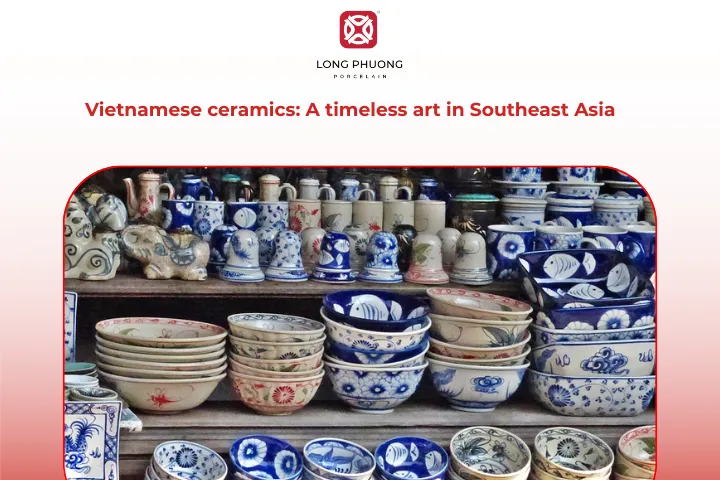
1. Vietnamese ceramics history
1.1. Prehistoric era
Over 3,000 years ago, during the Dong Son culture, early Vietnamese communities already knew how to craft simple pottery by hand. These antique Vietnamese ceramics were mainly utilitarian, created from natural clay with rough shapes and basic carved or painted patterns. This marks the very first chapter of Vietnamese ceramics history, where functionality came before artistry but still laid the foundation for future development.
1.2. Ly – Tran Dynasties (11th–14th centuries)
Antique Vietnamese ceramics rose to the level of fine art with the introduction of glaze techniques and more refined craftsmanship. Famous kilns such as Bat Trang and Chu Dau supplied exquisite works to the royal court and even for export. Decorative motifs often included dragons, phoenixes, and lotus flowers. They are symbols deeply tied to spiritual and cultural beliefs.
1.3. Le – Nguyen Dynasties (15th–19th centuries)
Advances in kiln technology brought new glaze colors, including the signature blue-and-white and celadon. Antique Vietnamese ceramics became more diverse in both form and function, ranging from everyday items to ritual and courtly objects. While some designs carried Chinese influence, they retained a distinct Vietnamese identity. This stage highlights how Vietnamese ceramics history reflects both cultural exchange and local originality.
1.4 Modern era (from the 1920s to today)
Antique Vietnamese ceramics continue to evolve with new materials, modern techniques, and creative approaches. Today, they are not only part of daily life but also celebrated as works of art and cultural souvenirs. Many artisans actively strive to preserve traditional craftsmanship while blending it with contemporary design, keeping modern Vietnamese ceramics vibrant in the global market.
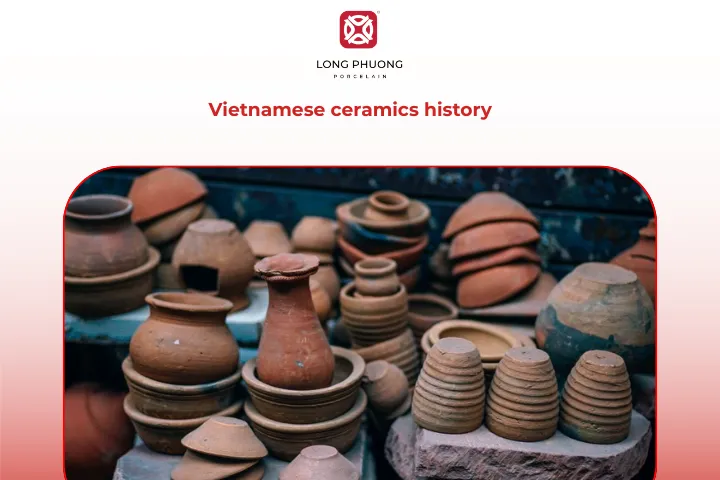
2. The cultural meaning and historical value of Vietnamese ceramics
2.1 Symbol of culture and belief
Vietnamese ceramics are more than just everyday objects; they carry priceless cultural and spiritual meaning. For centuries, many ceramic pieces have been used in religious rituals and ancestor worship, with their delicate patterns reflecting folk beliefs, a deep respect for nature, and the values of community life. Through these traditions, ceramics have helped preserve and strengthen Vietnam’s cultural identity across generations.
2.2 Archaeological and historical heritage
Ceramics also serve as a window into history. Archaeological discoveries of ancient pottery provide researchers with valuable insights into how people once lived, worked, and connected. Some rare and treasured pieces are now displayed in major museums, where they stand as powerful reminders of a long and rich Vietnamese ceramics history. Each artifact tells a story that helps us piece together the nation’s artistic and cultural journey.
2.3 Artistic and economic value
Beyond their cultural and historical importance, Vietnamese ceramics hold significant artistic and economic value. They are admired as works of art, celebrated both at home and abroad for their craftsmanship and beauty. The ceramic tradition also supports cultural tourism, drawing visitors who are eager to experience Vietnam’s heritage firsthand. Today, as artisans blend age-old techniques with modern creativity, modern Vietnamese ceramics not only retain their traditional charm but also gain increasing value in global markets.
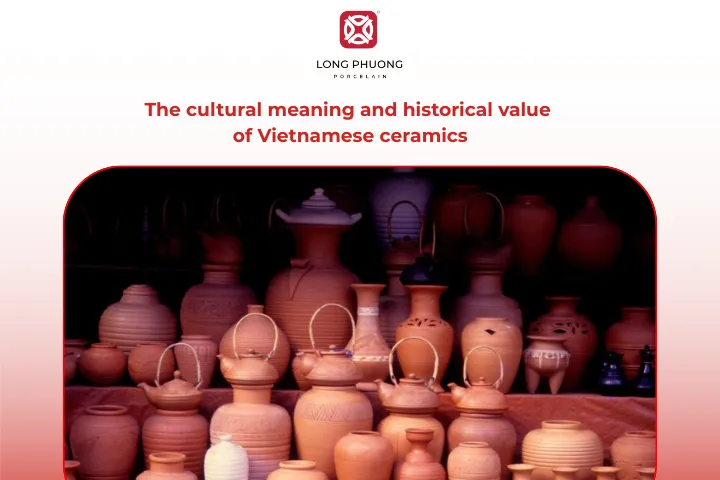
3. Process of making Vietnamese ceramics
Ceramic making demands a high level of artistic creativity, and it is through this creativity that artisans breathe life into clay. Each piece they craft carries a part of their soul, resulting in unique works of art that are deeply human, powerfully captivating, and impossible to ignore.
Step 1: Selecting and preparing the clay
The clay used for pottery must have high plasticity, fine grains, low shrinkage when drying, and enough heat resistance depending on the type of ceramic being made. Before use, the clay is carefully processed to remove impurities. Depending on the style of pottery, artisans may mix in varying amounts of kaolin. If the clay is too sticky, absorbs too much water, or contains little sand, they will add sand or other non-plastic materials to prevent cracking during drying or firing.
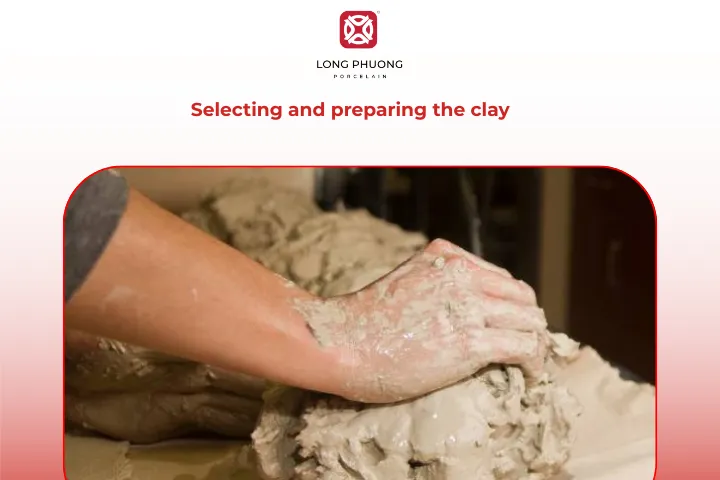
Step 2: Shaping the form
This is one of the most important stages in the pottery-making process. From the prepared clay, the artisan begins to give each piece its unique form. Depending on the technique, the shape can be created by hand-building, throwing on a potter’s wheel, or molding with casts. At this stage, the product is still wet and very fragile, so it must be dried carefully to prevent cracks, maintain its shape, and ensure an even finish.
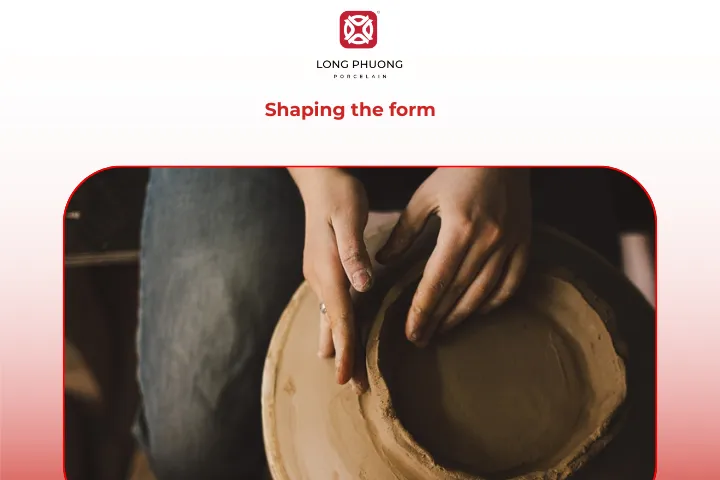
Step 3: Decorating with patterns
To enhance the artistic value of their work, potters often paint intricate designs on the surface using brushes and natural pigments. In addition to hand-painting, they may also use other decorative techniques such as drawing circular lines around the rim, body, or base of the piece, or applying special glazes that flow during firing to create soft, natural streaks of color. In some traditions, families even use the technique of imprinting floral patterns onto the surface of already fired, glazed ceramics, adding another layer of beauty and uniqueness.
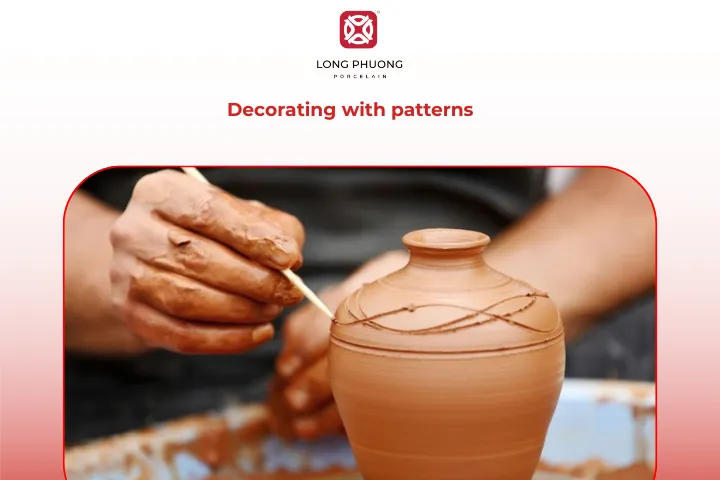
Step 4: Glazing
Once the raw piece has been shaped and decorated, it can either be pre-fired at a low temperature before glazing or glazed directly without this step. For larger items, artisans often pour or spray the glaze onto the surface, while for smaller pieces, the dipping method is commonly used. This glazing process not only enhances durability but also adds a smooth, glossy finish that highlights the beauty of the ceramic.
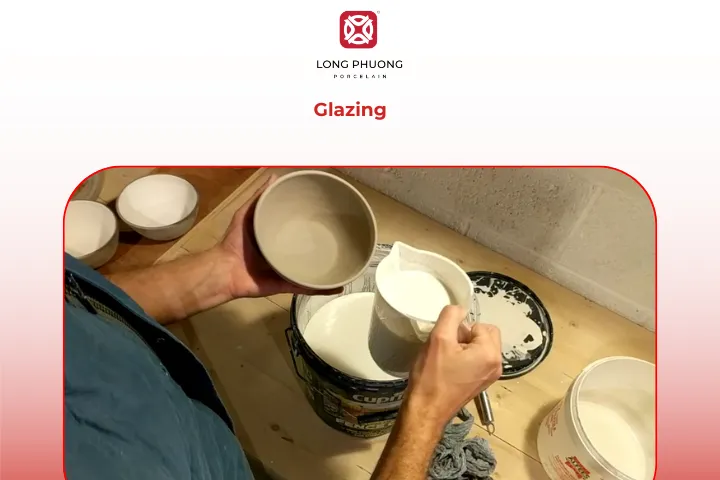
Step 5: Firing
The firing stage is where clay truly transforms into durable ceramics. Traditionally, potters used frog kilns, vertical kilns, and dome kilns, while more recently, box kilns have become common. The fuel can vary from wood and coal dust to gas. Both the firing time and temperature depend on the type of kiln and the specific ceramic being made.
- Earthenware is usually fired at 600–900°C (1110–1650°F)
- Brown stoneware at 1100–1200°C (2010–2190°F)
- Porous stoneware at 1200–1250°C (2190–2280°F)
- White stoneware at 1250–1280°C (2280–2335°F)
- Porcelain at 1280–1350°C (2335–2460°F)

4. Video about ceramics making in Vietnam
5. Technique in shaping Vietnamese ceramic products
The art of ceramics is not just about clay and fire. It’s about technique. Every bowl, plate, vase, or sculpture carries the mark of the artisan’s skill and the technical methods they use. Without these techniques, we wouldn’t have the wide variety of unique and beautiful ceramic pieces we see today.
5.1. Core shaping techniques
- Wheel throwing: Perhaps the most recognizable method, wheel throwing, allows artisans to create perfectly round forms such as bowls, plates, and vases. The potter’s wheel gives precision and symmetry, but it still requires steady hands and years of practice.
- Molding: Molds make it possible to produce consistent shapes in large numbers. This technique is ideal for mass production, though it tends to limit creativity compared to other approaches.
- Hand building: This method is the most labor-intensive but also the most expressive. Artists shape clay entirely by hand, often using techniques like carving, sculpting, or building up layers to achieve intricate designs and textures.
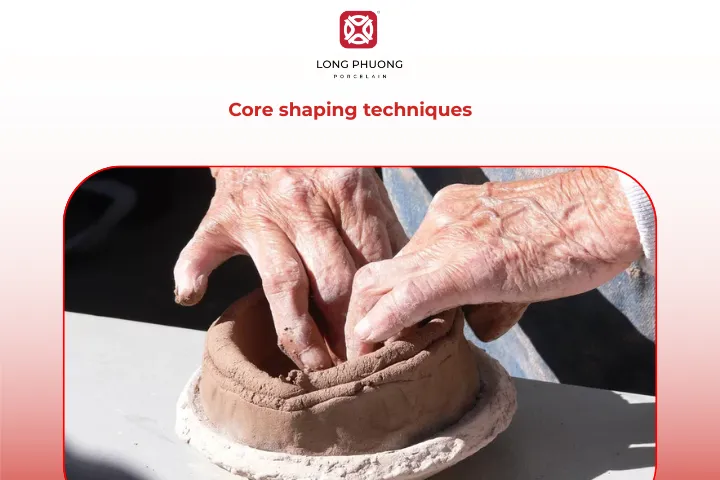
5.2. Decoration techniques
- Hand painting: Using special ceramic paints, artisans add patterns, images, and details directly onto the surface. Each piece becomes one-of-a-kind.
- Printing: Designs and motifs can be transferred onto ceramics through methods like heat transfer or decals. This allows for consistency and efficiency in decorative work.
- Carving: By etching or cutting into the clay surface, artisans create raised or recessed designs that add depth and texture.
- Glazing: Glaze acts like both a protector and a beautifier. It adds color, shine, and durability to the finished product, transforming simple clay into something visually striking and long-lasting.

5.3. Firing techniques
- Bisque firing: This first firing is done at a lower temperature, before the glaze is applied. It hardens the clay but keeps it porous enough for glazing.
- Glaze firing: After glazing, the piece is fired at higher temperatures. This process fuses the glaze to the surface, giving ceramics their glossy finish and strength.
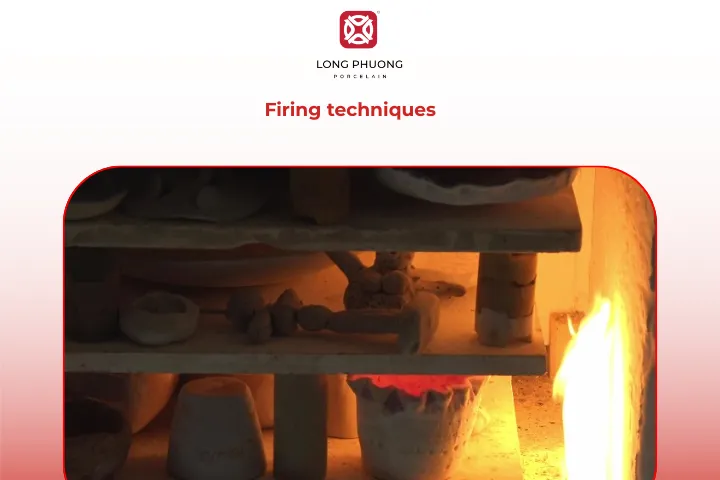
6. Iconic Vietnamese ceramic brands
6.1. Long Phuong Porecelain
Long Phuong Porcelain was born in the heart of Bac Ninh, a land where the timeless traditions of Vietnamese culture are still preserved and passed down through generations. With more than 20 years of experience, Long Phuong has continuously strengthened its position in the market, building a reputation of trust and reliability with customers. Today, Long Phuong’s products can be found across all 63 provinces of Vietnam, serving millions of households nationwide. Beyond the domestic market, the brand has also expanded internationally in recent years, reaching customers in countries such as the United States, Australia, and Japan.

6.2. Bat Trang ceramics
Bat Trang ceramic village is not only a place that preserves Hanoi’s cultural heritage through generations, but it is also one of the largest ceramic suppliers in Vietnam. Bat Trang ceramics are known for their thick, durable clay body and their signature glazes, which often have an ivory or opaque finish. Since most shaping techniques are done entirely by hand, each piece carries a distinctive character. The village is also famous for its unique glaze styles that can only be found here, such as moss green, white, brown, crackled blue, and a porous clay base in grayish brown.
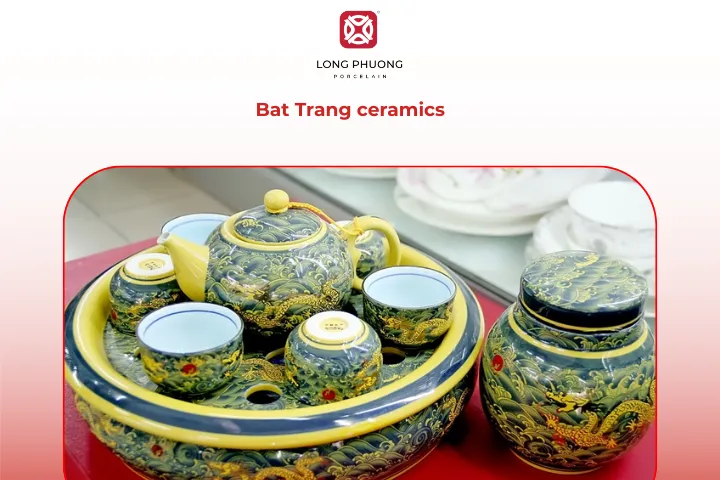
6.3. Chu Dau ceramics
Chu Dau ceramic village, located in Hai Duong Province, was established in the 14th century and reached its peak during the 15th and 16th centuries. What makes Chu Dau ceramics stand out is their exceptionally clear white glaze, often decorated with blue patterns created from cobalt glaze, as well as red-brown and green-yellow motifs made using the traditional “three-color glaze” technique. The shapes and patterns are remarkably delicate, showcasing a high level of craftsmanship while reflecting the distinct cultural identity of Vietnam.
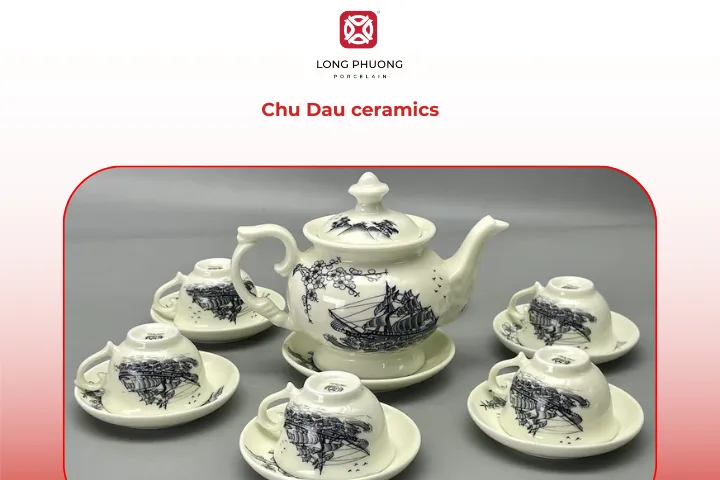
6.4. Bau Truc ceramics
Bau Truc ceramic village in Ninh Thuan Province, once known as Paley Hamu Trok, is one of the oldest pottery villages in Southeast Asia. According to tradition, the craft was taught to the villagers by their ancestral master, Poklong Chanh, a mandarin under King Po Klong Garai, who ruled Panduranga from 1151 to 1205. The products of Bau Truc are distinctive, often shaped with the graceful curves of the Apsara dancers, the divine dance of Shiva through statues and reliefs, or symbolic motifs such as the linga-yoni, paired male and female jars, Cham dance figures, and artisans playing the saranai flute.
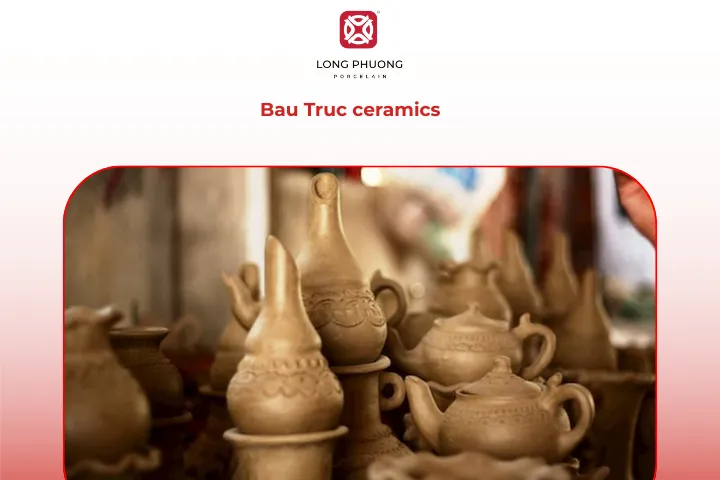
6.5. Phu Lang ceramics
Phu Lang ceramic village, located in Que Vo District, Bac Ninh Province, is one of Vietnam’s most renowned traditional ceramic villages. What makes Phu Lang ceramics unique is their signature glaze colors, ranging from brown, dark brown, and light yellow to deep amber and golden brown, often referred to collectively as “eel-skin glaze.” In terms of form, Phu Lang pottery embraces a variety of shaping techniques, resulting in diverse and richly expressive designs.
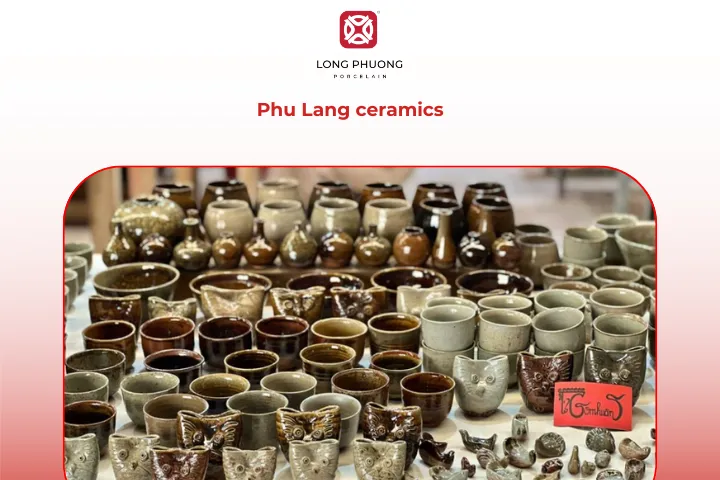
7. Decorative patterns on Vietnamese ceramics
7.1. Lotus motif
When discussing Vietnamese ceramics, one cannot overlook the image of the lotus, a symbol of purity, grace, and the Buddhist spirit. For centuries, lotus motifs have been a vital part of the nation’s ceramic art, reflecting the profound cultural and spiritual values of the Vietnamese people.
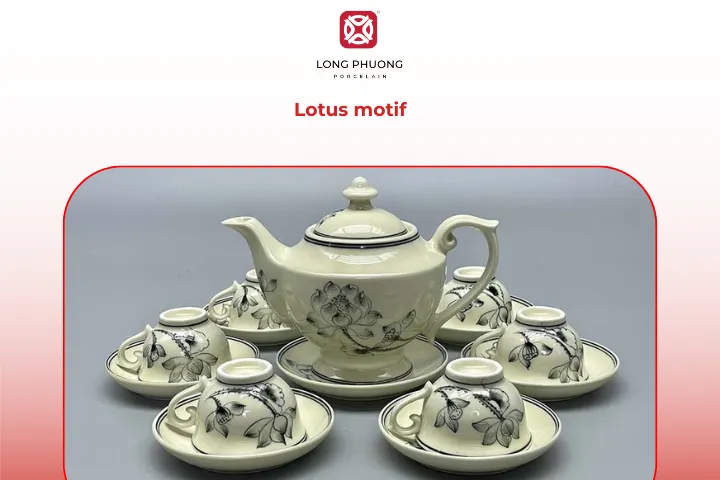
7.2. Dragon and phoenix imagery
Dragons and phoenixes are two of the four sacred creatures in Vietnamese tradition, symbolizing strength, authority, and good fortune. For centuries, these mythical beings have inspired Vietnamese ceramic artisans, giving life to intricate patterns that carry deep cultural meaning.

7.3. Human figures
Human figures are among the most fascinating and unique decorative motifs found on Vietnamese ceramics. These designs offer a vivid glimpse into the cultural and social life of the Vietnamese people across different historical periods.
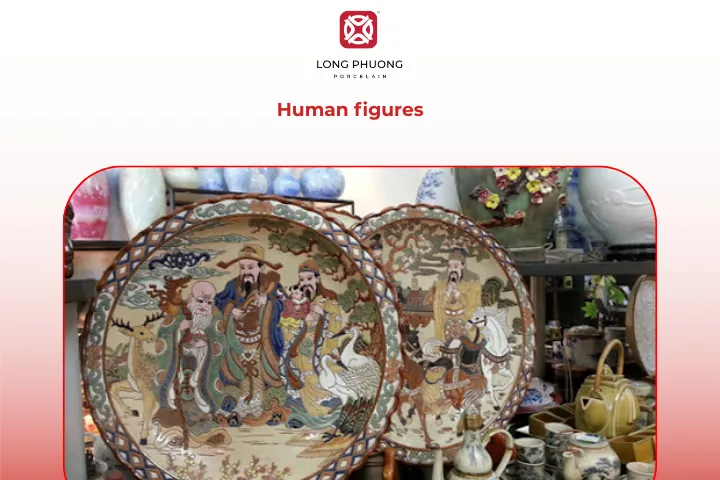
8. How to store Vietnamese ceramics
8.1. Avoid strong impacts and stacking
Although ceramics are known for their durability, they can still chip or crack if dropped, hit, or left under heavy pressure for too long. When displaying pottery, it’s best to place it in a stable spot, away from busy areas, to reduce the risk of accidental damage.
If you need to stack ceramic pieces, use soft cloth pads or foam sheets between layers to prevent scratches and absorb impact. When moving your pottery, always wrap it in newspaper, bubble wrap, or soft fabric for extra protection—especially for delicate pieces with handles, thin edges, or raised patterns.
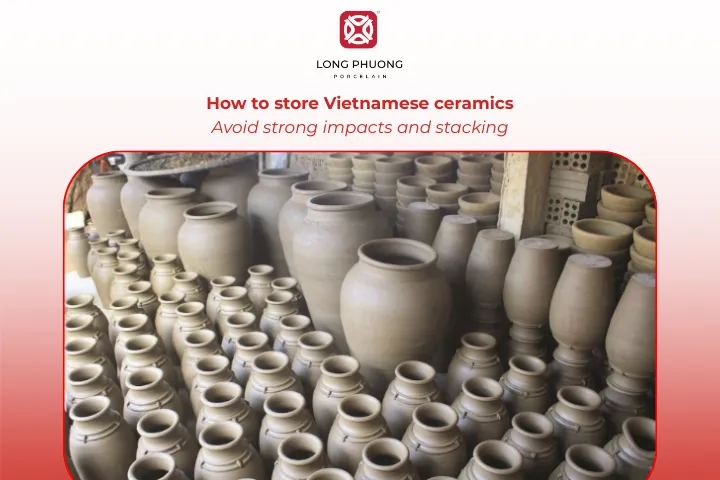
8.2. Keep ceramics in a dry place
High humidity can cause the glaze on ceramics to yellow, develop mold, or deteriorate over time. To keep your pottery in good condition, always store or display it in a dry, well-ventilated space. Avoid damp areas like basements or storage rooms. If you’re using a glass cabinet, make sure it has proper airflow or place a few moisture-absorbing packets inside to maintain stable humidity levels.
For ceramic pieces that aren’t used often, wipe them down periodically with a dry cloth and check for any signs of moisture or mold so you can take action right away. With proper care, your decorative ceramics will keep their beauty and last for many years.
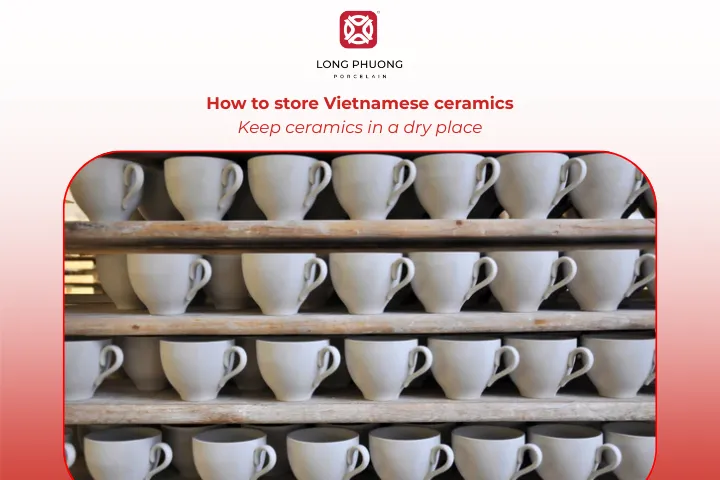
8.3. Clean ceramics properly
When cleaning ceramics, avoid using vinegar, lemon, strong chemical cleaners, or concentrated baking soda, as these can damage the glaze and leave blotchy marks on the surface.
Instead, choose gentle cleaning solutions diluted with warm water and use a soft cloth or a fine-bristle brush to safely remove dirt without scratching. For tougher stains, try a mix of warm water and mild soap, then dry the piece immediately with a clean cloth to help preserve its natural shine.

9. The future Vietnamese pottery
For thousands of years, pottery in Vietnam has gone through periods of rise and decline, yet generation after generation of artisans have continued to breathe life into clay. Today, Vietnamese ceramics range from simple earthenware to elegant household and decorative pieces covered in rich, colorful glazes. Each creation not only reflects the skill, creativity, and artistry of the potter but also preserves the cultural values and traditions of Vietnam, holding within it the soul of the people.
Unlike traditional pottery that relies heavily on manual work, modern Vietnamese ceramics benefit from advancements in production technology. Machine-made ceramics are crafted with high-temperature printing techniques that ensure designs remain permanent, safe for daily use, and resistant to peeling or cracking. These innovations have opened the door to a wider variety of styles, functions, and applications, making ceramic products more diverse and practical than ever.
Though the journey of preserving Vietnamese pottery faces many challenges, artisans and craft villages remain committed to keeping the kilns burning. With their creativity, skill, and dedication, they continue to produce distinctive ceramic works, ensuring that the story of Vietnamese pottery is not only preserved but also constantly renewed, bridging the beauty of the past with the innovations of today.
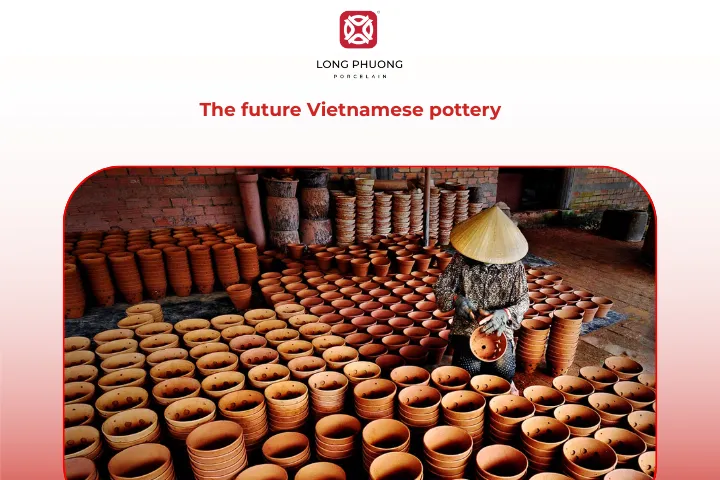
10. FAQs
10.1. What are Vietnamese ceramics?
Vietnamese ceramics are handmade pottery and porcelain created by skilled artisans across Vietnam. They include everyday items like bowls and plates, as well as decorative vases, ritual objects, and export pieces that carry centuries of tradition and artistry.
10.2. Why are Vietnamese ceramics important?
They are important because they reflect Vietnam’s cultural identity, history, and craftsmanship. Beyond their practical uses, they represent a unique blend of local creativity and global influence, making them both functional and collectible works of art.
10.3. When did Vietnamese ceramics come out?
Around 6,000 to 7,000 years ago, ceramics first began to take shape in Vietnam. Over time, pottery spread across many regions of the country, experiencing periods of great prosperity as well as times of hardship.
10.4. Are Vietnamese ceramics dishwasher safe?
Glazed ceramics can go in the dishwasher, but you should not do it often. The strong water pressure can make items move around, which may cause chips or cracks. Handmade ceramics are especially fragile, so it’s safer to wash them by hand with mild soap and a soft sponge. This helps keep them beautiful and long-lasting.
10.5. Are Vietnamese ceramics microwave safe?
The answer is no. Some glazes contain high levels of metal that can spark or even cause fire. Since customers can’t always know what type of glaze was used in handmade ceramics, the safest choice is to avoid using them in the microwave.
11. Conclusion
Vietnamese ceramics across the ages stand as a vivid testament to the creativity, craftsmanship, and cultural identity of the Vietnamese people. From the simple pieces of prehistoric times to the refined works of art treasured in the modern era, ceramics have always been closely tied to daily life and the soul of the nation. Preserving, developing, and innovating this art form not only safeguards cultural heritage but also creates opportunities for economic growth and promotes Vietnam’s distinct culture on the global stage. In doing so, ceramics continue to affirm their vital role in the cultural and historical journey of Vietnam.
Related Posts
CEO of Long Phuong Group Joint Stock Company, with more than 20 years of exploration and research to obtain the best formulas and professional experience, Long Phuong Porcelain has produced more than 400 designs of all kinds of household porcelain, Significant contributions to Vietnam's ceramic industry.
 Vietnam
Vietnam
